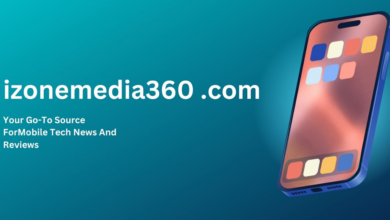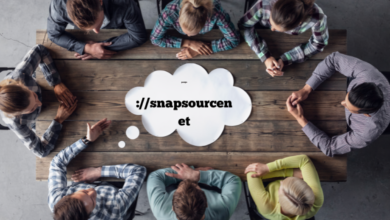Noteeffective4761 Explained: Techniques, Challenges, and Solutions

Introduction to noteeffective4761
Noteeffective4761 is a pioneering tool designed to optimize note-taking by emphasizing efficiency and ease of information management. Developed through collaboration between cognitive psychologists and educational technologists, it addresses common issues in organizing and retrieving notes.
Unlike traditional note-taking methods that often lead to cluttered and hard-to-navigate notes, noteeffective4761 stands out for its clarity and systematic approach. Its design allows for seamless integration across various digital devices, making it accessible and convenient for users on the go. The tool employs advanced algorithms to sort and rank information, facilitating quick and easy retrieval of specific details.
Key features of noteeffective4761 include an automatic tagging system that categorizes notes based on their content, real-time collaboration capabilities, and support for multimedia files. The automatic tagging helps in grouping related notes, simplifying the process of information review and retrieval. The real-time collaboration feature enables multiple users to work on notes simultaneously, enhancing teamwork during projects and meetings. Additionally, the ability to attach images, videos, or audio files enriches the note-taking experience, making it more engaging and comprehensive.
In this guide, you will find detailed insights on how to leverage noteeffective4761 to enhance your note-taking skills. We will explore tips for boosting productivity, effective strategies for organizing information, and customization options to tailor the tool to your specific needs. By the end of this guide, you’ll be equipped to turn noteeffective4761 into a powerful asset for improving your academic or professional endeavors.
What is noteeffective4761?
Noteeffective4761 is a highly effective note-taking method known for its exceptional organization. It uses techniques designed to enhance knowledge retention and improve the ability to recall information. This approach is invaluable for learners, professionals, and anyone looking to refine their note-taking skills.
What typical problems with noteeffective4761 arise, and how can I fix them?
A common challenge with noteeffective4761 is that teams often struggle to consistently apply the method in their work. To address this, setting aside dedicated time each day for note-taking and review can significantly improve adherence. Another issue is the steep learning curve associated with any new method. To manage this, start with basic techniques and gradually incorporate more advanced aspects of noteeffective4761 as you become more comfortable. Additionally, if organizing your notes proves difficult, consider using templates or structured formats to guide your note-taking process.
Our goal is to address these common challenges and clarify the noteeffective4761 method, offering support to help you overcome any obstacles you may encounter. This approach is an excellent way to enhance your note-taking skills and achieve a more effective and organized system.
Methods and Plans for Taking Notes Effectively
Effective note-taking is crucial for both academic and professional success. The noteeffective4761 methodology offers several strategies to enhance note-taking and improve memory retention. One well-known approach within this method is the Cornell Note-Taking System. This technique divides the page into three sections: notes, cues, and summary. The notes section captures the main information, the cue column includes questions and key terms, and the summary provides a concise overview of the notes. This structured format helps boost recall and understanding.
Another useful technique is Mind Mapping. This method organizes information around a central idea using branches to represent related concepts. Mind Mapping is especially beneficial for brainstorming, exploring complex topics, or solving creative problems. It engages both the left and right sides of the brain, which aids in memory retention.
Flow-Based Note-Taking is another effective approach. It focuses on capturing information fluidly during lectures or discussions, rather than aiming for precise transcription. This method is less formal and allows for a more flexible and observational record of the information flow, making it useful in dynamic settings.
Proper note organization is also essential. Using abbreviations and symbols can speed up note-taking and make it more efficient. For example, shorthand notations like ‘w/’ for “with” and symbols such as arrows or asterisks can streamline the process. Visual aids like diagrams, charts, and sketches can further enhance understanding and memory by providing clear, observable representations of concepts.
Different scenarios may call for different methods. For instance, the Cornell Method might be ideal for organizing historical events and dates, while Mind Mapping could be useful for developing marketing ideas in a group setting. In a fast-paced business meeting, Flow-Based Note-Taking can help capture key details without missing important information.
By integrating these techniques, noteeffective4761 becomes a robust approach to improving note-taking. These strategies offer flexibility and adaptability, allowing users to tailor their note-taking to their specific needs and preferences.
To what extent is the noteeffective4761 technique effective?
The effectiveness of the noteeffective4761 method has been consistently demonstrated through various studies and user experiences. This method proves to be highly useful and efficient, particularly when applied systematically through techniques like categorization and summarization. Users often find that it significantly enhances their understanding and retention of information. Many appreciate the clarity it brings to applying the content in their daily lives, leading to a more profound grasp of the material.
Final Thoughts
Enhancing the noteeffective4761 method with the right tools and resources is essential for effective note-taking. Digital note-taking applications are particularly valuable, offering significant functionality and convenience in today’s world. Popular platforms like Evernote, OneNote, and Notion each provide unique features tailored to different user needs.
Evernote stands out for its exceptional search capabilities, allowing users to easily locate specific information within a vast collection of notes. OneNote organizes content through notebooks, sections, and pages, mimicking a traditional binder but with advanced digital enhancements. Notion combines note-taking with project management, making it suitable for both professional and academic use.
In addition to dedicated note-taking apps, general software like MS Word and Google Docs are highly effective. These platforms offer robust editing features and multiple options for content organization, making them ideal for collaborative note-taking and group projects.
Smart pens, such as Livescribe, and tablets with stylus capabilities, like the iPad with Apple Pencil, blend the benefits of handwriting with digital technology. These tools can scan handwritten notes and convert them into digital text, aiding in organization and retrieval in line with the noteeffective4761 approach.
To further enhance the noteeffective4761 experience, consider incorporating additional resources. Books such as “How to Take Smart Notes” by Sönke Ahrens and “The Organized Mind” by Daniel J. Levitin offer valuable insights into effective note-taking techniques. Online platforms like Coursera and Udemy provide courses to learn various note-taking strategies, while communities on Reddit and social media can offer support, shared experiences, and practical tips.
By integrating these tools and resources, users can maximize the effectiveness of the noteeffective4761 method and optimize their note-taking practices.
FAQs
1. What is Noteeffective4761?
Noteeffective4761 is an advanced note-taking methodology designed to improve the organization and efficiency of information management. Developed collaboratively by cognitive psychologists and educational technologists, it provides a systematic approach to note-taking that enhances knowledge retention and retrieval.
2. How does Noteeffective4761 differ from traditional note-taking methods?
Unlike traditional methods that often result in cluttered and hard-to-navigate notes, Noteeffective4761 emphasizes clarity and systematic organization. It incorporates advanced algorithms to sort and rank information, making it easier to find specific details quickly.
3. What are the key features of Noteeffective4761?
Key features include an automatic tagging system for categorizing notes, real-time collaboration capabilities, and support for multimedia files. These features enhance the note-taking experience by simplifying information review and facilitating teamwork.
4. What challenges might users face with Noteeffective4761 and how can they be overcome?
Users might struggle with consistent application of the method or face a steep learning curve. To overcome these challenges, set aside dedicated time for note-taking and review, start with basic techniques, and use templates or structured formats to organize notes effectively.
5. What note-taking techniques are recommended within the Noteeffective4761 method?
Recommended techniques include the Cornell Note-Taking System, Mind Mapping, and Flow-Based Note-Taking. Each method offers unique advantages for improving note organization, memory retention, and adaptability in different scenarios.
6. How effective is the Noteeffective4761 method?
The effectiveness of Noteeffective4761 has been proven through various studies and user feedback. It enhances understanding and retention of information by applying systematic techniques like categorization and summarization.
7. What digital tools can complement the Noteeffective4761 method?
Digital tools such as Evernote, OneNote, and Notion are highly compatible with Noteeffective4761, offering features like advanced search, organizational enhancements, and integration with project management. General software like MS Word and Google Docs, as well as gadgets like smart pens and stylus-enabled tablets, also support the method.
8. Are there additional resources to help with using Noteeffective4761?
Yes, additional resources include books like “How to Take Smart Notes” by Sönke Ahrens and “The Organized Mind” by Daniel J. Levitin. Online courses from platforms like Coursera and Udemy, and communities on Reddit and social media, can also provide valuable insights and support.
9. How can Noteeffective4761 be tailored to individual needs?
Noteeffective4761 can be customized by incorporating various techniques and tools that fit personal preferences and specific requirements. Using different methods based on the context, such as Mind Mapping for brainstorming or Flow-Based Note-Taking for dynamic settings, can enhance its effectiveness.
10. Where can I find more information about Noteeffective4761?
For more information, refer to this guide and explore related books, online courses, and note-taking communities. These resources will provide additional insights and strategies for effectively using the Noteeffective4761 method.
Uncover juicy celebrity rumors and entertainment updates on usatimemagazinepro.com


